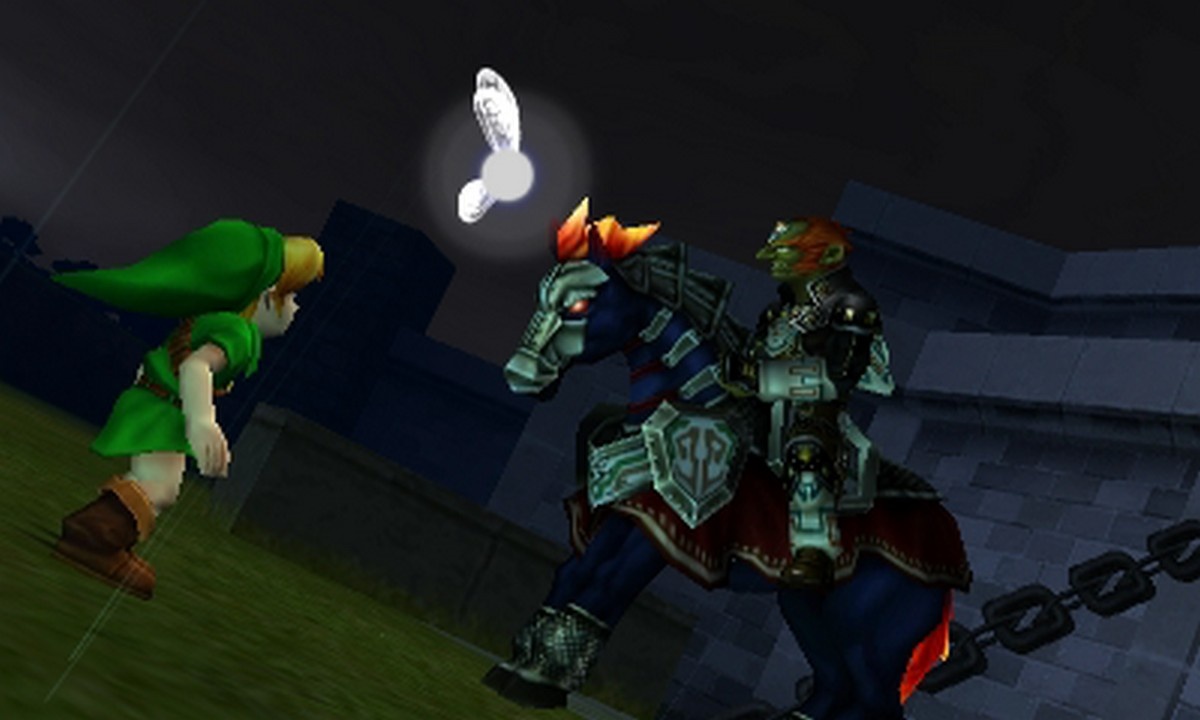The Legend of Zelda: Ocarina of Time 3D Updated Preview
We run you through some of the new features in this port of an all-time classic.
There's not much you need to say about Nintendo's upcoming 3DS port of The Legend of Zelda: Ocarina of Time 3D. It's a remake of what's considered to be one of the greatest games of all time. If you haven't played it yet, you should. Ta-da! That was easy, wasn't it? OK, maybe not. The real question, though, is whether this 3DS port warrants a return to the world of Hyrule for those who've already completed the journey. We won't pretend to answer that for you, but we'll do our best to make the decision easier. Let's run through a few quick ways the system does and does not make use of the 3DS hardware.

StreetPass
If you own a 3DS, you've probably already figured out that one of the coolest--or at least most novel--features of the system is StreetPass. When put in sleep mode, the system automatically detects other 3DS systems in its vicinity and uses it in some pretty neat social features. In the case of Super Street Fighter IV 3D Edition, you can actually stage fights with people while both your systems are asleep using a team of fighters you've unlocked during your own personal play-through. So how does Ocarina of Time use this impressive new feature? It doesn't. Nintendo has decided against including any sort of StreetPass play or item swapping in this remake. On the one hand, yes, that's disappointing. But on the other hand, how do you retrofit new social features into a beloved classic without inciting a pitchfork-wielding mob?
Two Screens and Motion Control
The 3DS is a sort of Voltron device that combines the touch screen of the original DS and the motion-sensing capabilities of the Nintendo Wii. The touch screen provides a couple of benefits: It provides a new home for the heads-up display elements to let you focus on the game itself (including the 3D elements that we'll get to in a second), and it also reduces menu navigation by showing you handy information previously buried in menus (such as the notes for ocarina songs).
In terms of motion control, you can now jump into a first-person view to aim your slingshot or simply look around the environment, and you can change the view by moving the 3DS around. When we last saw the game, we noted that moving the 3DS around like this tended to clash with the 3D effect because of the relatively tight focus required for glasses-free 3D. What we've now discovered is that the motion control isn't really meant to be used for such wild gestures. The slide pad will actually let you make fast, sweeping camera adjustments, while any movements registered by the motion-sensing tech inside the system will move the first-person camera much more slowly and precisely. So, yes, we kind of weren't doing it right before.
Visual Upgrades
You didn't think we would let you guys go without talking about how 3D works in Ocarina of Time 3D, did you? Well, as we mentioned before, putting the HUD elements on the bottom screen really helps you focus on the game itself; thus, it allows 3D to stand out that much more. The game doesn't overwhelm with 3D, but it does provide a nice sense of depth to your surroundings and even gives you the slightest bit of help with jumping from platform to platform. But overall, like most 3DS games, it's a nice added touch that doesn't impact the gameplay in any significant way.
Something that has much more of an impact is the visual upgrade to those old environments. Nintendo made sure to show us the original game (or at least the GameCube port of it running in 480i), and when you put the two systems side by side, you do get a pretty good appreciation for the work that's gone into this port. When you're roaming through the wide-open pastures of Hyrule, you don't really notice much of a difference, but when you get into tighter areas, you can spot sharper textures and much-improved character models. But beyond that, certain parts of the game have had entirely new detail added in--like the bazaar in Hyrule that used to be a fairly empty store but is now filled with all sorts of clutter and items to help drive home its use as a place to buy random items.

Hopefully, this gives you a better idea of what's new and different in the 3DS port of Ocarina of Time. Certainly none of these features are game changers on their own, but they do add up to a fairly solid little suite that complements the classic core gameplay. Whether or not you're an Ocarina of Time veteran who needs to take another spin through this world is something you'll have a bit of time to stew over--the game hits store shelves June 19.
Got a news tip or want to contact us directly? Email news@gamespot.com
Join the conversation